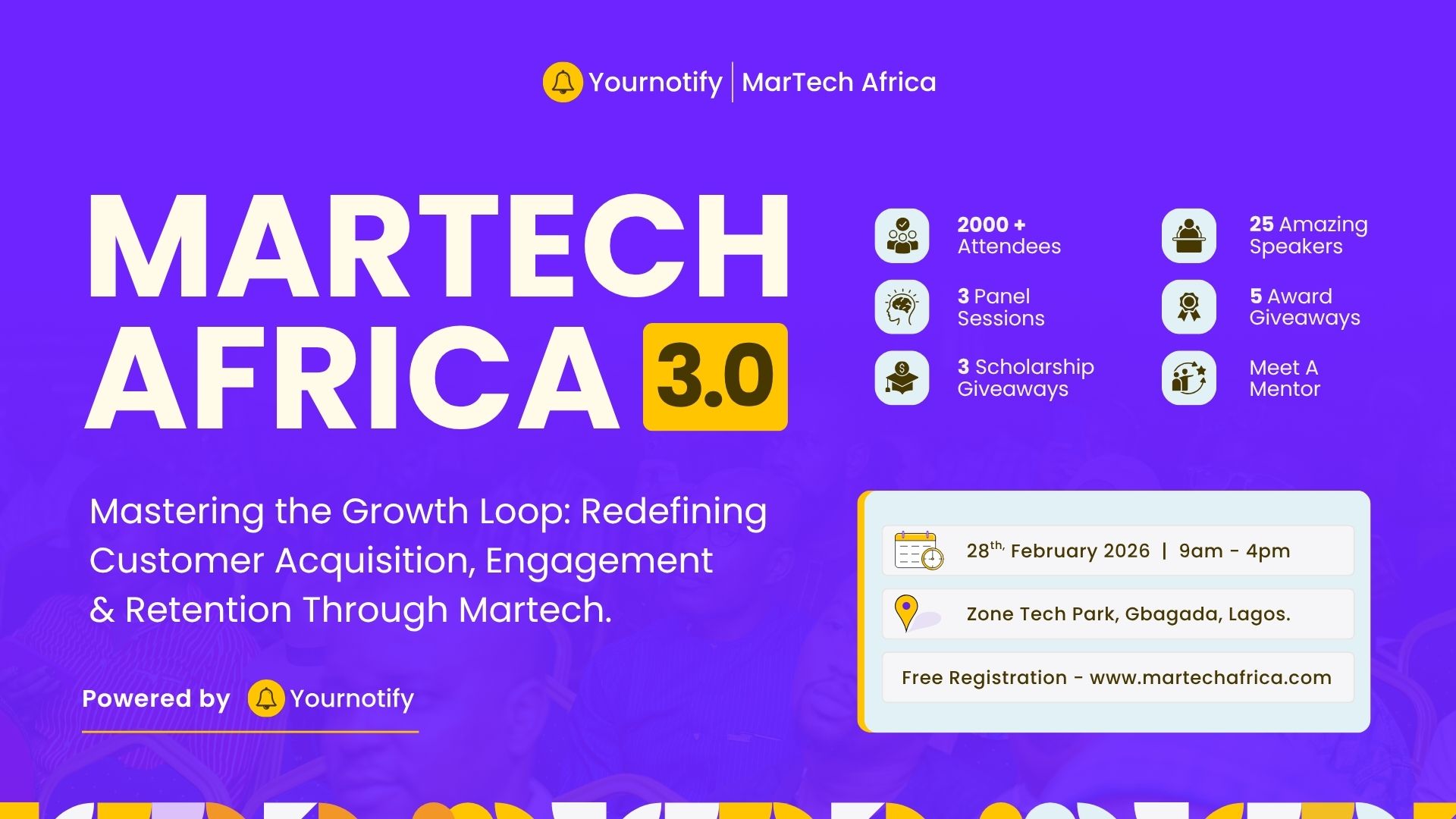For many African businesses, growth has traditionally been viewed as a linear journey: attract customers,…

Martech vs Adtech: Key Differences Every Marketer Should Know
Marketing teams rely heavily on technology to reach, engage, and retain customers. Two words that often dominate this space and faces comparison is Martech vs Adtech (Marketing Technology and Advertising Technology). While these terms are sometimes used interchangeably, they represent two distinct but complementary ecosystems. For marketers aiming to maximize ROI, understanding the nuances between Martech and Adtech is very essential.
What is Martech?
Martech, short for Marketing Technology, refers to the tools and software marketers use to plan, execute, and measure marketing campaigns. It covers the entire customer journey from brand discovery to loyalty.
Common Martech tools include:
- Customer Relationship Management (CRM) systems like HubSpot or Salesforce.
- Email marketing platforms such as Mailchimp or Klaviyo.
- Analytics tools like Google Analytics or Mixpanel.
- Content management systems (CMS) like WordPress or Drupal.
- Social media management tools such as Hootsuite or Buffer.
At its core, Martech helps brands with customer relationship building. It helps brands understand customer behaviors, personalize messaging, and deliver value beyond the initial sale.
What is Adtech?
Adtech, short for Advertising Technology, refers to the platforms and tools that manage, deliver, and measure digital advertising campaigns. Unlike Martech, Adtech is primarily focused on acquisition and exposure.
Examples of Adtech tools include:
- Demand-Side Platforms (DSPs): For automated ad buying, e.g., The Trade Desk.
- Supply-Side Platforms (SSPs): Helping publishers sell ad inventory.
- Ad Exchanges: Marketplaces where advertisers and publishers transact.
- Ad servers and tracking tools like Google Ad Manager.
- Retargeting solutions such as Criteo.
Adtech’s goal is straightforward. To put your brand in front of the right audience at the right time and at the right price.
Martech vs Adtech: The Core Differences
1. Primary Purpose & Role
-
Adtech focuses on streamlining the creation, targeting, delivery, buying, and optimization of digital advertising campaigns, enabling real-time bidding, ad placement, viewability checks, and performance measurement.
-
Martech empowers marketers to nurture leads and customers, manage campaigns across owned channels, personalize messaging, analyze performance, and drive customer retention
-
Adtech platforms include:
DSPs (Demand-Side Platforms), SSPs (Supply-Side Platforms), Ad Exchanges, Ad Servers, and DMPs, all designed for automated ad buying, selling, targeting, and delivery.
-
Martech platforms include:
CRMs, Marketing Automation Platforms, CMS, Email Marketing Tools, SEO & Social Media Tools, and Analytics Tools
3. Audience: Known vs Unknown
-
Adtech generally targets unknown audiences, using broader demographic or behavioral data to attract new users.
-
Martech focuses on known audiences, leveraging data from interactions (email, behavior, purchases) to nurture and personalize
4. Data Usage
-
Adtech traditionally relies heavily on third-party data for targeting, though it’s shifting toward first-party data due to privacy changes.
-
Martech is grounded in first-party data (website activity, customer profiles, engagement) to personalize content and journeys.
5. Billing and Revenue Models
-
Adtech often uses pay-per-use billing, e.g., commissions or markup on media spends (CPM-based).
-
Martech typically follows a subscription/SaaS model, offering flat-rate access for tools like CRMs or analytics platforms.
6. Users & Operational Teams
-
Adtech is primarily used by advertisers, media buyers, and ad agencies to execute ad campaigns.
-
Martech is adopted by in-house marketing teams (often via Marketing Ops) to manage the customer lifecycle.
7. Metrics & KPIs
-
Adtech is measured via campaign efficiency: impressions, clicks, CTR, CPA, ROAS.
-
Martech metrics focus on engagement, conversion, retention, and customer lifetime value (CLV).
8. Overlap & Convergence
Some tools blur the line. For instance:
CDPs (Customer Data Platforms) unify customer data and serve both Martech personalization and Adtech targeting uses. While Marketing Automation platforms increasingly offer ad campaign features, enabling unified workflows. This convergence is leading to the hybrid term “MadTech”, reflecting the combination of both tech stacks.
How Martech and Adtech Work Together
While they differ, Martech and Adtech aren’t rivals, they are two sides of the same coin. A truly effective marketing strategy often requires both.
Here’s how they complement each other:
- Adtech attracts new users through digital ads, driving them to your website or landing page.
- Martech nurtures those users once they’re in your ecosystem, building trust and turning them into loyal customers.
For example:
- A paid ad (Adtech) drives a user to sign up for your newsletter.
- An email automation tool (Martech) sends personalized content to nurture the lead.
- A CRM (Martech) tracks their journey until they convert into a paying customer.
By integrating Adtech and Martech, businesses can build a seamless customer journey, from first click to repeat purchase.
Key Trends Shaping Martech and Adtech
1. The Death of Third-Party Cookies
Adtech platforms are shifting towards first-party data solutions, as there are browsers phasing out third-party cookies. Martech, which already thrives on first-party data, is becoming even more critical.
2. AI and Machine Learning
Both ecosystems are leveraging AI to deliver personalized ads (Adtech) and predict customer behavior (Martech). Tools powered by AI help automate targeting, segmentation, and personalization.
3. Data Privacy and Compliance
Regulations like GDPR and Nigeria’s NDPR emphasize customer privacy. Martech must prioritize consent-based data collection, while Adtech needs to adapt to stricter audience targeting practices.
4. Omnichannel Marketing
Consumers don’t stick to one channel. Martech and Adtech must work hand-in-hand to ensure consistent brand experiences across email, social media, search, display ads, and even offline touchpoints.
Why Marketers Should Care
Marketers who blur the lines between Martech and Adtech risk misallocating resources. For example, pouring money into advertising (Adtech) without a nurturing strategy (Martech) can lead to wasted spend. Similarly, investing heavily in Martech without driving fresh leads through Adtech can stall growth.
Martech and Adtech are not competing forces, they’re complementary strategies in a marketer’s toolkit. Adtech excels at reaching new audiences, while Martech ensures those audiences stick around and become loyal advocates. The balance lies in integrating the two.
Related Content
Top 7 DAM Software Tools for Marketers in 2025


